- DPD / Mean Field
- Continuum Model
- Multiscale Analysis
- Thermal
- Interface / Phase Separation / Particle Dispersion
- Materials Science
Material properties of phase-separated structures of block copolymer-nanoparticle composites
Importing structures calculated by DPD into Digimat-FE
Objectives and Methods
Block copolymers, which are composed of multiple polymers, are known to have various phase-separated structures depending on their block ratio. In this case study, the effect of the difference in the phase separation structure on the mechanical and thermal properties was evaluated by finite element analysis using Digimat-FE.
The phase separation structure obtained by J-OCTA can be output in STL format. Next, the STL model output from J-OCTA was imported into Digimat-FE, and mechanical and heat conduction analyses were performed to obtain the material properties.
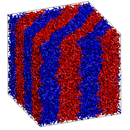
J-OCTA
Calculation of
phase separation structure
![]()
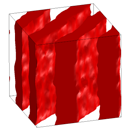
J-OCTA→Digimat
Output in STL format
![]()
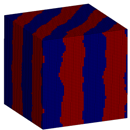
Digimat
Mesh generation
![]()
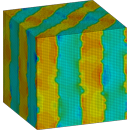
Digimat
Mechanical and
heat conduction analyses
Fig. 1 Flow of microstructure analysis by J-OCTA→Digimat-FE
Table 1 Material parameters (partial)
| Mechanical | Thermal | |
|---|---|---|
| Blue colored phase: Polymer | ・Elastplastic ・Density = 9e-10 ton/mm3 ・Young modulus= 1450 MPa ・Poisson ratio = 0.35 |
・Fourier ・Density = 900 kg/m3 ・Thermal conductivity = 0.1 W/m・K |
| Red colored phase: Elastomer | ・Elastic ・Density = 8.9e-10 ton/mm3 ・Young modulus= 10 MPa ・Poisson ratio = 0.4 |
・Fourier ・Density = 890 kg/m3 ・Thermal conductivity = 0.4 W/m・K |
Analysis Results
Figure 2 shows the phase-separated structures of the diblock copolymers obtained by DPD.
Figures 3 and 4 show the results of calculations using these structures with the solvers FE/Solver and FFT Solver included in Digimat-FE.
It can be confirmed that A10B10 and A6B14 are anisotropic in both tensile and heat conduction analysis due to their phase separated structure. On the other hand, A3B17 shows almost isotropy because the A phase is uniformly dispersed in the B phase.

A10B10
A6B14
A3B17
Fig. 2 Phase-separated structure results obtained by DPD.
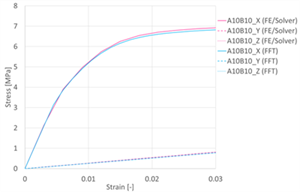
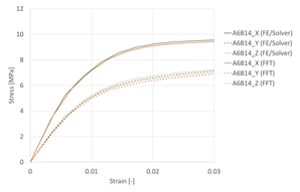
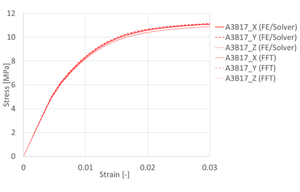 Fig. 3 Tensile analysis results using Digimat-FE/Solver and FFT Solver
Fig. 3 Tensile analysis results using Digimat-FE/Solver and FFT Solver
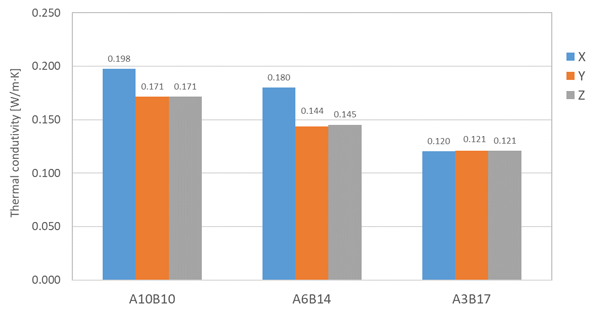 Fig. 4 Results of heat conduction analysis using Digimat-FE/Solver
Fig. 4 Results of heat conduction analysis using Digimat-FE/Solver
In the movie, in addition to the phase separation structure introduced in this page, analysis using the filler dispersion structure obtained by J-OCTA is also performed.
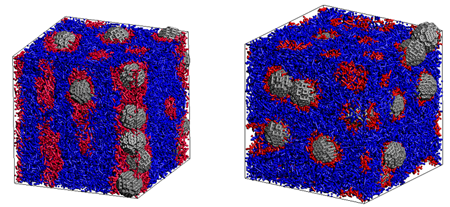 Fig. 5 Example of filler dispersion structure results obtained by DPD
Fig. 5 Example of filler dispersion structure results obtained by DPD
Finite element analysis of mesoscale structures obtained by molecular simulation


